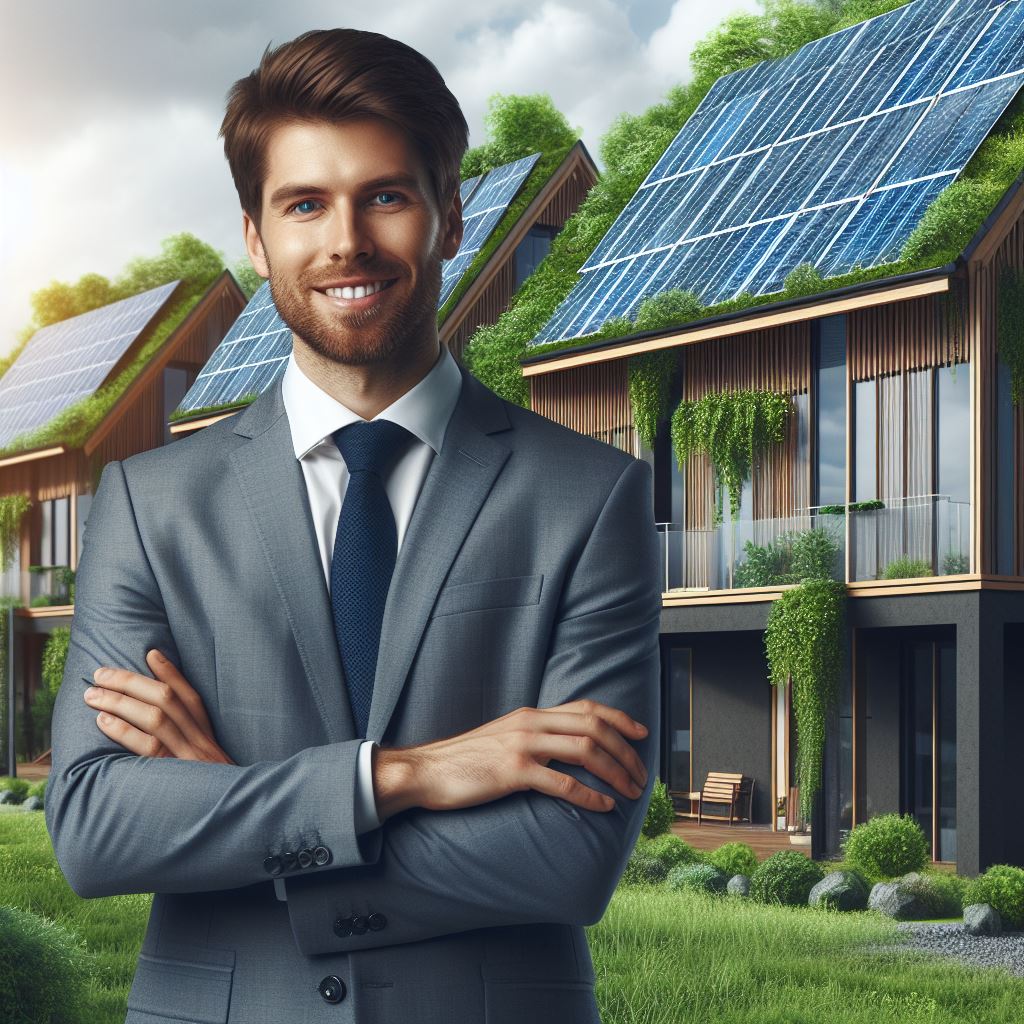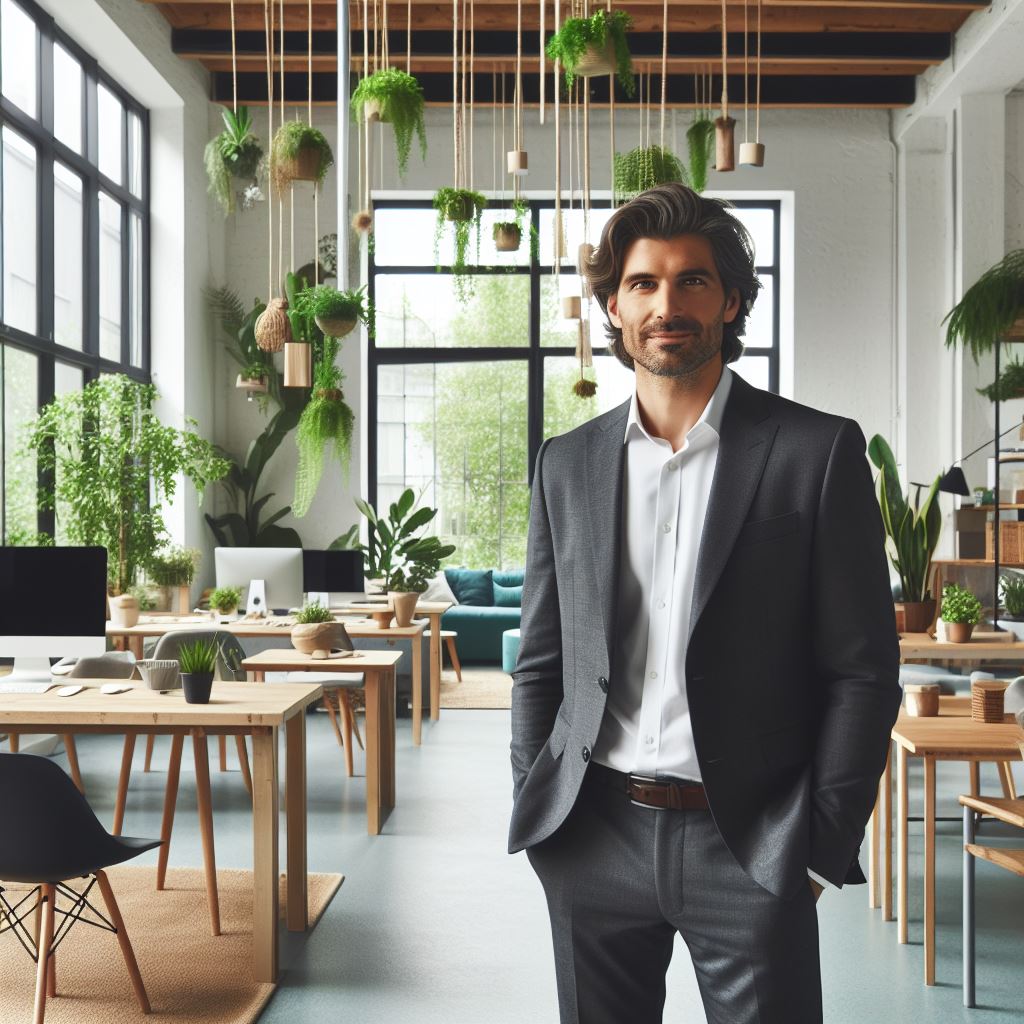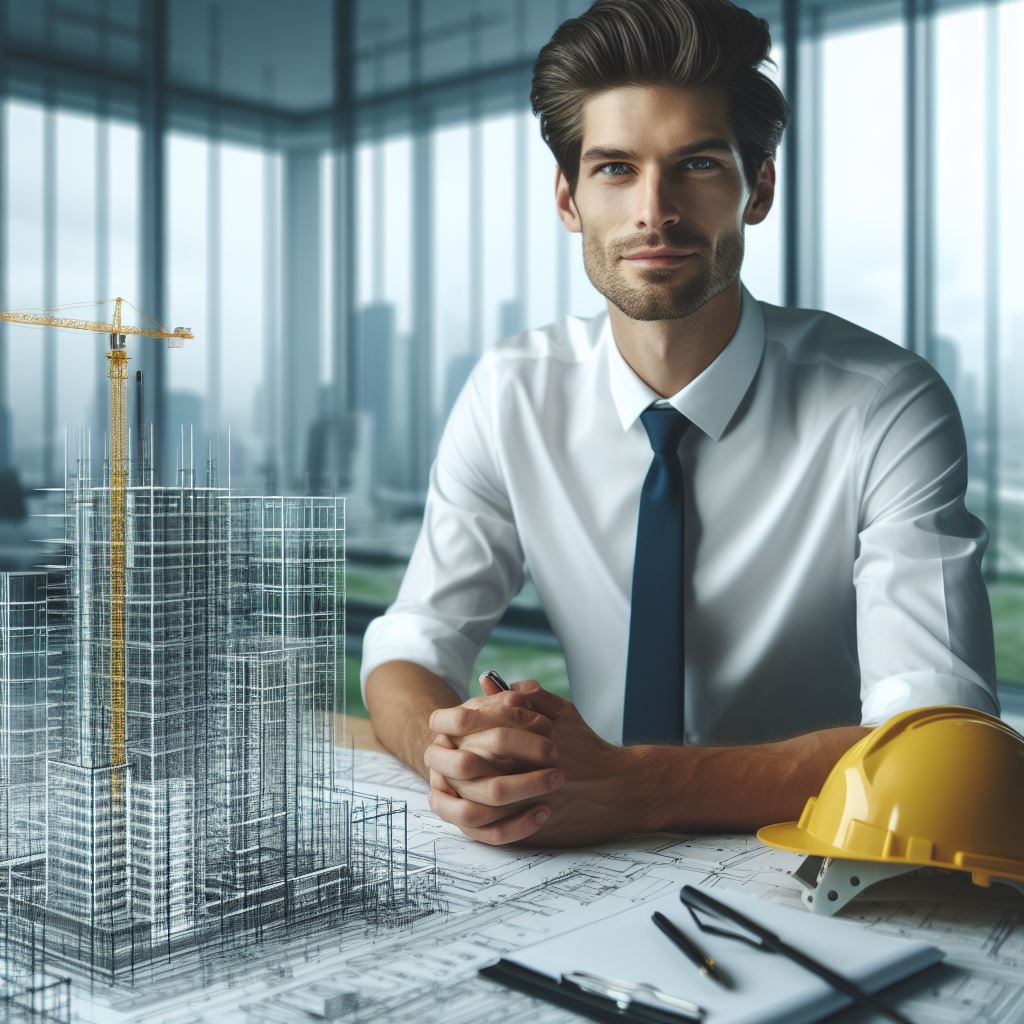Introduction
Green building trends have become increasingly important in recent years, as the world focuses on combatting climate change and achieving sustainability.
This blog chapter aims to highlight the significance of staying updated with the latest trends in green building.
A key reason why green building trends are essential is their impact on the environment.
By adopting sustainable construction practices, such as using renewable energy sources, minimizing waste, and implementing energy-efficient systems, buildings can significantly reduce their carbon footprint.
This not only helps combat climate change but also creates healthier and more livable spaces for people.
Furthermore, green building trends can also have economic benefits.
As more countries and industries prioritize sustainability, green building certifications, such as LEED (Leadership in Energy and Environmental Design), have gained prominence.
Having a green building certification not only enhances a building’s value but also attracts environmentally conscious tenants and investors.
In addition to environmental and economic benefits, staying updated with the latest trends in green building is crucial for construction professionals.
By staying informed about new technologies, materials, and design approaches, professionals can deliver innovative and efficient solutions that meet the evolving needs of clients.
This knowledge also positions them as leaders in their field and enhances their professional reputation.
In essence, green building trends are of utmost importance due to their significant impact on the environment, economy, and professional development.
Embracing these trends and staying updated can lead to a more sustainable and prosperous future for the construction industry.
Overview of the current state of green building
Statistics on the growth and adoption of green building practices:
The green building industry has experienced significant growth over the past decade.
In 2024, green building practices are expected to continue to gain popularity.
The Global Green Building Market is projected to reach $388.1 billion by 2024, with a compound annual growth rate of 11.9%.
In the United States, the green building market is estimated to account for around 40% of all new nonresidential construction.
The number of LEED-certified buildings in the US has surpassed 100,000, demonstrating a strong commitment to sustainable construction practices.
Green building practices have expanded beyond the commercial sector to include residential buildings as well.
The residential green building market is expected to reach $121.6 billion by 2024, driven by increased awareness and energy cost savings.
Benefits of green buildings in terms of energy efficiency and sustainability:
Green buildings significantly reduce energy consumption through the use of energy-efficient systems and renewable energy sources.
According to the US Green Building Council, green buildings can reduce energy consumption by 30-50% compared to conventional buildings.
Energy-efficient features such as LED lighting, solar panels, and high-performance insulation contribute to lower utility bills and reduced carbon emissions.
Green buildings promote a healthier indoor environment by using natural ventilation, non-toxic materials, and efficient HVAC systems.
Improved indoor air quality leads to reduced health issues, increased productivity, and a better quality of life for occupants.
Sustainable building practices prioritize water conservation through techniques like rainwater harvesting and greywater recycling.
Green buildings also incorporate sustainable materials, such as recycled steel and bamboo, reducing the environmental impact of construction.
The increased use of natural light in green buildings not only saves energy but also improves occupant well-being and productivity.
Green buildings create jobs in various sectors, including architecture, construction, and manufacturing of sustainable building materials.
Investing in green buildings can lead to long-term cost savings due to reduced energy and maintenance expenses.
In fact, the green building industry is witnessing substantial growth and adoption globally.
The US, in particular, is leading the way with a significant number of LEED-certified buildings and a growing market for both commercial and residential green buildings.
The benefits of green buildings, such as energy efficiency, sustainability, and improved indoor air quality, make them a compelling choice for developers and occupants alike.
As the awareness of environmental issues continues to grow, green building practices are expected to become the norm rather than the exception in the coming years.
Read: Boston’s 2024 Commercial Real Estate Developments
Emerging technologies in green building
Green building practices have evolved rapidly in recent years, with a growing emphasis on sustainability and energy efficiency.
As we look ahead to 2024, several emerging technologies in green building are set to revolutionize the industry.
Use of advanced materials
One key trend in green building is the increased use of advanced materials, such as recycled and sustainable materials.
These materials offer numerous benefits, including reduced environmental impact and improved energy efficiency.
Recycled materials, such as recycled concrete and steel, are being used in various construction projects.
By diverting waste from landfills and reducing the need for virgin materials, these recycled materials significantly reduce the carbon footprint of buildings.
Sustainable materials, such as bamboo and responsibly sourced timber, are also gaining popularity.
These materials are renewable and have a lower impact on the environment compared to traditional building materials.
They offer excellent thermal insulation properties and can help reduce energy consumption for heating and cooling.
Integration of smart systems for energy management and monitoring
Another significant trend in green building is the integration of smart systems for energy management and monitoring.
These systems leverage advanced technologies to optimize energy consumption and reduce waste.
Smart thermostats, for example, learn and adapt to occupants’ behavior, automatically adjusting the temperature to optimize comfort and energy efficiency.
These devices can help reduce energy consumption for heating and cooling, leading to significant cost savings for building owners.
Additionally, smart lighting systems use motion sensors and daylight harvesting to adjust lighting levels based on occupancy and natural light availability.
By efficiently controlling lighting usage, these systems can save energy and improve overall lighting quality.
Moreover, real-time energy monitoring systems provide detailed insights into a building’s energy usage.
Building managers can access this information and make data-driven decisions to further optimize energy performance and identify areas for improvement.
Utilization of renewable energy sources
Utilizing renewable energy sources is a crucial aspect of green building, and solar panels and geothermal systems are at the forefront of this trend.
Solar panels capture sunlight and convert it into electricity, enabling buildings to generate clean, renewable energy.
The advancements in solar technology have made it more affordable and efficient, making it increasingly attractive for green building projects.
With innovations like solar tracking systems and transparent solar panels, the potential for solar energy integration in buildings is expanding.
Similarly, geothermal systems leverage the earth’s natural heat to provide heating and cooling for buildings.
By utilizing stable ground temperatures, these systems offer an eco-friendly alternative to traditional HVAC systems.
They significantly reduce greenhouse gas emissions and can help achieve net-zero energy goals.
As we look forward to 2024, the emergence and adoption of these advanced technologies in green building will lead to more sustainable, efficient, and environmentally friendly buildings.
By using advanced materials, integrating smart systems, and utilizing renewable energy sources, the green building industry is poised to make significant strides towards a greener future.
Read: Advanced Materials in US Construction: 2024 Overview
Innovative design and construction techniques
Introduction of biophilic design principles for human well-being
Biophilic design principles will be incorporated into building design to enhance the well-being of occupants.
Natural elements such as plants, water features, and natural lighting will be introduced into buildings.
This approach aims to improve occupant productivity, reduce stress, and promote a connection with nature.
Biophilic design will be applied in both commercial and residential buildings.
Incorporation of green roofs and vertical gardens to enhance sustainability and aesthetics
Green roofs, featuring vegetation and plant life, will become a popular addition to buildings.
Green roofs provide insulation, reduce energy consumption, and improve air quality.
They also offer recreational spaces and contribute to urban biodiversity.
Vertical gardens will be integrated into building facades, creating visually appealing green spaces.
Implementation of modular construction techniques to reduce waste and construction time
Modular construction will revolutionize the building industry by streamlining the construction process.
Buildings will be constructed using prefabricated modules that are manufactured off-site.
This technique reduces on-site waste, improves quality control, and minimizes construction time.
Modular construction allows for greater flexibility and customization in building design.
Overall, innovative design and construction techniques will shape the future of green building trends in 2024.
The integration of biophilic design principles will prioritize human well-being and create a connection with nature.
The incorporation of green roofs and vertical gardens will enhance sustainability while adding aesthetic value to buildings.
Furthermore, modular construction techniques will revolutionize the construction industry by reducing waste and construction time, ultimately leading to greener and more efficient buildings.
Read: US Infrastructure Bill: Impact on Commercial Real Estate

Green building certifications and standards
Overview of popular certifications like LEED and WELL
LEED (Leadership in Energy and Environmental Design) is a widely recognized certification for green buildings.
LEED measures a building’s sustainability by evaluating its design, construction, operation, and maintenance.
The certification focuses on various aspects such as energy efficiency, water conservation, and sustainable materials.
LEED-certified buildings are considered environmentally responsible and resource-efficient.
WELL Building Standard is another popular certification that prioritizes occupant health and well-being.
WELL evaluates factors such as air quality, lighting, water quality, and thermal comfort.
It emphasizes the creation of healthier indoor environments that improve productivity and overall well-being.
LEED and WELL certifications provide a framework for creating sustainable and healthy buildings.
Importance of certifications in promoting green practices
Certifications play a crucial role in promoting green building practices and sustainability.
They provide credibility, recognition, and a competitive advantage to buildings implementing green strategies.
Green certifications act as a visible symbol of a building’s commitment to environmentally friendly practices.
They encourage resource efficiency, waste reduction, and lower carbon footprints.
Certifications also foster innovation, encouraging architects and designers to adopt sustainable design solutions.
Building owners and tenants benefit from reduced operating costs and improved indoor air quality.
Certifications create market demand for green buildings, leading to a healthier and more sustainable future.
Upcoming certifications in the industry
As the green building industry continues to evolve, new certifications are emerging to address specific needs.
Living Building Challenge (LBC) is becoming popular for buildings aiming to achieve net-zero energy, water, and waste.
It focuses on regenerative design, encouraging buildings to give back to the environment.
Fitwel Certification focuses on promoting health and well-being in the workplace.
It evaluates factors like access to healthy food, physical activity, and occupant comfort.
BREEAM (Building Research Establishment Environmental Assessment Method) is gaining traction internationally.
BREEAM assesses a building’s environmental impact by considering various categories, including energy, water, and ecology.
These new certifications reflect the industry’s commitment to continuous improvement and addressing specific sustainability challenges.
Read: US Commercial Building: 2024 Trends and Insights
Environmental and social considerations in green building
Reducing carbon footprint and promoting energy efficiency
Incorporating renewable energy sources like solar panels and wind turbines to reduce reliance on fossil fuels.
Implementing energy-saving measures such as LED lighting and smart thermostats for efficient energy consumption.
Designing buildings with natural lighting and ventilation to minimize the need for artificial energy.
Opting for sustainable materials with a lower carbon footprint, such as recycled or locally sourced materials.
Enhancing insulation and building envelope to reduce energy losses and increase thermal efficiency.
Integration of practices that enhance indoor air quality and occupant health
Installing high-performance air filtration systems and monitoring devices to ensure clean and fresh indoor air.
Using low-VOC (volatile organic compounds) paints, adhesives, and materials to minimize harmful emissions.
Incorporating effective sound insulation techniques to reduce noise pollution and improve occupant comfort.
Designing spaces with ample natural daylight, which has been linked to improved productivity and well-being.
Implementing green cleaning practices to mitigate the use of toxic chemicals and promote a healthier environment.
Role of green buildings in mitigating climate change and promoting social equity:
Green buildings contribute significantly to reducing greenhouse gas emissions, thus combating climate change.
By promoting energy efficiency, green buildings help in achieving sustainable development goals.
Green building initiatives create jobs and spur economic growth, fostering social equity and inclusive prosperity.
Accessible design features ensure that green buildings are inclusive for people with disabilities or special needs.
Green building certifications and rating systems encourage transparency and accountability in sustainable construction practices.
In review, environmental and social considerations play a crucial role in green building trends.
The focus on reducing carbon footprint, promoting energy efficiency, and enhancing indoor air quality ensures a sustainable and healthy built environment.
Additionally, green buildings have the potential to mitigate climate change, promote social equity, and provide economic benefits.
By incorporating these practices, we can strive towards a greener, more sustainable future.
Current market trends and future projections
Current market demand for green buildings
The demand for green buildings is constantly increasing, driven by several factors.
- Rising awareness of environmental issues: People are becoming more conscious of the impact their actions have on the planet.
This awareness has led to an increased demand for sustainable and eco-friendly buildings. - Government regulations and incentives: Many governments around the world have implemented regulations and offered incentives to promote green building practices.
These measures have further fueled the demand for green buildings. - Cost savings and energy efficiency: Green buildings are known for their energy-efficient features, which help reduce utility costs in the long run.
This financial benefit has made them highly desirable among both residential and commercial property owners. - Improved occupant health and well-being: Green buildings are designed to prioritize occupant health and well-being.
Features such as ample natural light, proper ventilation, and the use of non-toxic materials contribute to a healthier indoor environment. - Enhanced market value and reputation: Green buildings often command higher market values and are seen as a symbol of sustainable practices.
Many companies and organizations are adopting green buildings to enhance their reputation and attract environmentally conscious customers.
Key factors influencing future trends
Several key factors are expected to influence the future trends in green building practices.
- Technological advancements: As technology continues to evolve, new innovations will likely emerge in the field of green building materials and design.
This will lead to more efficient and sustainable building practices. - Increasing focus on carbon footprint reduction: With the growing urgency to combat climate change, there will be a greater emphasis on reducing carbon emissions associated with the construction and operation of buildings.
This will drive the development of greener building practices. - Collaboration among stakeholders: The concept of sustainability requires collaboration among various stakeholders, including architects, engineers, developers, regulators, and occupants.
This collective effort will shape the future direction of green building practices. - Urbanization and population growth: The world’s population is projected to increase, leading to more urbanization.
This will result in a higher demand for buildings, necessitating the adoption of sustainable and efficient construction practices.
The direction of green building practices in the years to come
Based on the current trends and projected factors, it is anticipated that green building practices will continue to grow and evolve in the coming years.
- Integration of smart technology: Buildings will increasingly incorporate smart technology to optimize energy consumption, monitor indoor air quality, and enhance occupant comfort.
This integration will further improve the efficiency and sustainability of green buildings. - Net-zero energy and carbon-neutral buildings: The focus will shift towards achieving net-zero energy and carbon-neutral buildings.
This means buildings will strive to generate their own energy through renewable sources and minimize carbon emissions throughout their lifecycle. - Circular economy principles: Green buildings will adopt principles of the circular economy, aiming to minimize waste and maximize resource efficiency.
This will involve the use of recycled and reclaimed materials, as well as designing buildings for disassembly and future reuse. - Sustainable urban planning and design: Cities will embrace sustainable urban planning and design to create greener and more livable environments.
This will involve strategies such as green spaces, energy-efficient transportation systems, and mixed-use developments.
In a nutshell, the current market trends for green buildings demonstrate a growing demand for sustainable and eco-friendly construction practices.
The future of green building practices will be influenced by factors such as technological advancements, a focus on carbon footprint reduction, collaboration among stakeholders, and the challenges posed by urbanization and population growth.
As the world becomes more environmentally conscious, green buildings will continue to evolve, incorporating smart technology, aiming for net-zero energy and carbon neutrality, adopting circular economy principles, and embracing sustainable urban planning and design.
Conclusion
Staying updated with green building trends is imperative. It ensures that professionals remain at the forefront of the industry’s advancements.
By staying informed, professionals can adapt strategies to incorporate the latest sustainable technologies and practices into their projects.
This not only enhances the environmental performance of buildings but also contributes to energy efficiency, cost savings, and occupant well-being.
Moreover, being knowledgeable about current trends demonstrates a commitment to environmental stewardship and positions professionals as leaders in sustainable design and construction.
Moving forward, it’s essential to continue exploring and implementing sustainable practices in the industry.
This requires a proactive approach to research, education, and collaboration.
Professionals should seek out opportunities to learn about emerging technologies, materials, and strategies for improving the environmental performance of buildings.
By embracing sustainability, professionals can drive positive change within the industry and contribute to broader efforts to mitigate climate change and preserve natural resources.
Moreover, by prioritizing sustainability, professionals can differentiate themselves in the marketplace and attract clients who value environmentally responsible design and construction practices.
Ultimately, by working together and embracing innovation, the industry can create buildings that are not only environmentally friendly but also resilient, healthy, and inspiring places to live, work, and play.




